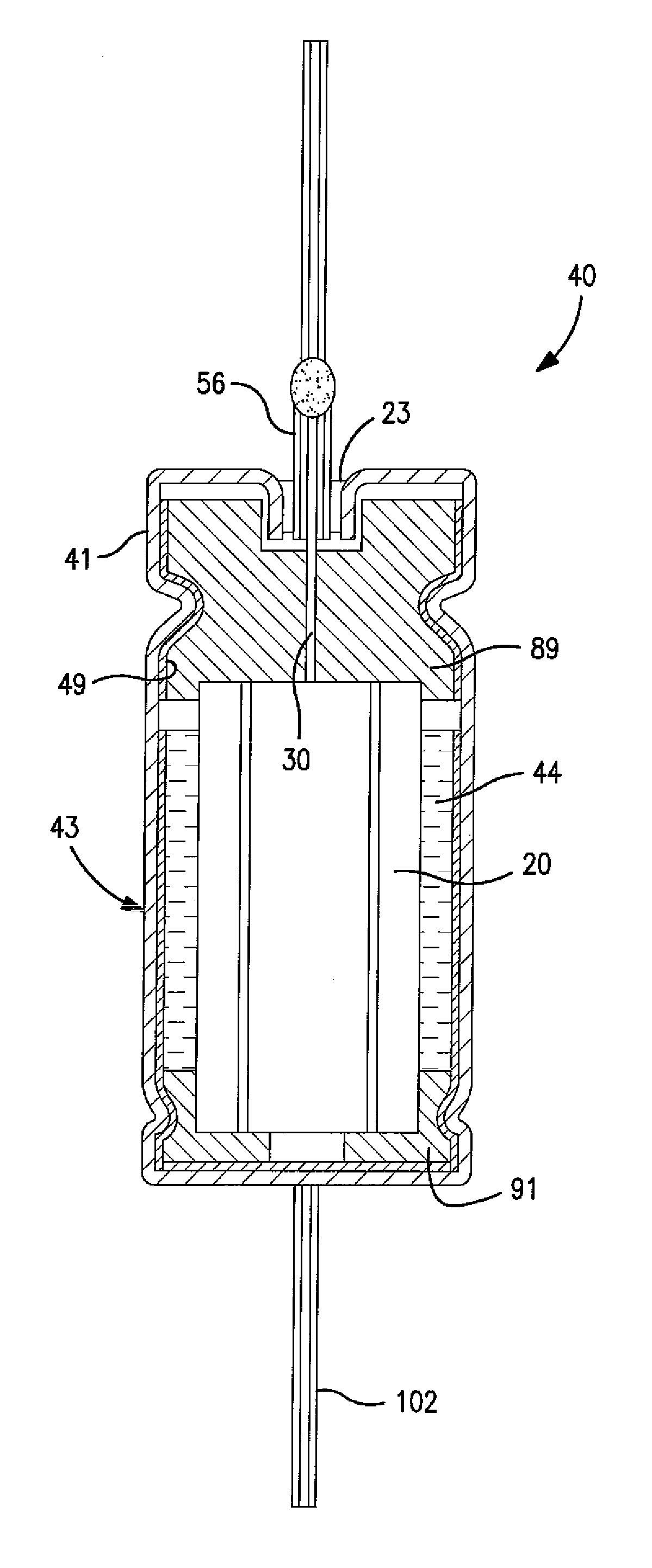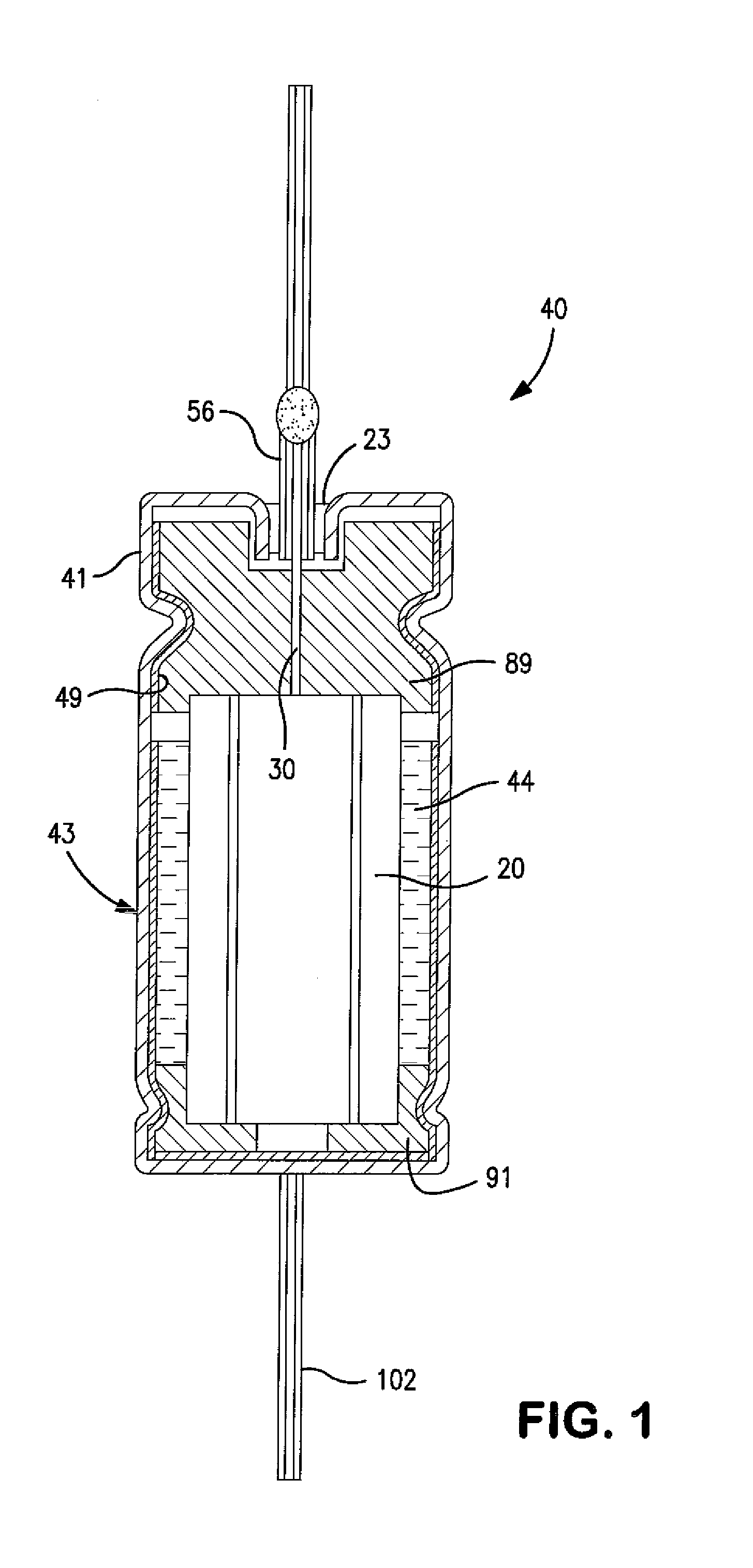Wet Capacitor Cathode Containing an Alkyl-Substituted Poly(3,4-Ethylenedioxythiophene)
a technology of alkyl-substituted polystyrene and wet capacitors, which is applied in the manufacture of electrolytic capacitors, electrochemical generators, electrolytic organic material coatings, etc., can solve the problems of high cost of coatings, easy to be detached, and low unit cell voltage of this type of capacitors
- Summary
- Abstract
- Description
- Claims
- Application Information
AI Technical Summary
Benefits of technology
Problems solved by technology
Method used
Image
Examples
example 1
[0095]Initially, 10 pieces of cylindrical tantalum cans with a size of 18.3 mm (length)×9.1 mm (internal diameter) were sandblasted with a JetStreem Blaster II (SCM System, Inc.). The sandblasting time was 20 seconds. These samples were then degreased in water in an ultrasonic bath and then dried at a temperature of 85° C. for 5 minutes. A precursor solution was thereafter applied to the microroughened surface that contained 4 g of ethanol (Sigma-Aldrich), 0.1 g of methylpyrrolidone (Sigma-Aldrich), 1 g of EDT, and 10 g of 40% butanol solution of iron(III)-p-toluene sulfonate (Heraeus). The tantalum cans were filled to the control level with the polymerization precursor solution for 5 minutes and were then put into a drying oven at 85° C. for 15 minutes. The resulting structure of poly(3,4-ethylenedioxythiophene) was washed in methanol to remove reaction by-products for 5 minutes and the tantalum cans were put into a drying oven at 85° C. for 5 minutes. This polymerization cycle was...
example 2
[0096]Wet capacitors were formed in the manner described in Example 1, except that 1.21 g of EDT-OH was used instead of 1 g of EDT.
example 3
[0097]Initially, 10 pieces of cylindrical tantalum cans with a size of 18.3 mm (length)×9.1 mm (internal diameter) were sandblasted with a JetStreem Blaster II (SCM System, Inc.). The sandblasting time was 20 seconds. These samples were then degreased in water in an ultrasonic bath and then dried at a temperature of 85° C. for 5 minutes. In a beaker, 3.27 g dodecyl benzene sulfonic acid (Sigma Aldrich) was dissolved in 100 ml of deionized water. 1.42 g of EDT was added to the aqueous solution and heated to 75° C. At 75° C., the emulsion became a homogeneous solution. Upon cooling the precipitate is filtered and the clear solution is used for anodic electrochemical polymerization. A roughened tantalum can was filled with clear aqueous solution of EDT and then electrically connected to the positive pole of a power supply and a stainless steel wire was electrically connected to the negative pole of the power supply. Electro-polymerization was then performed using a power supply setting...
PUM
| Property | Measurement | Unit |
|---|---|---|
| temperatures | aaaaa | aaaaa |
| temperatures | aaaaa | aaaaa |
| average diameter | aaaaa | aaaaa |
Abstract
Description
Claims
Application Information
 Login to View More
Login to View More - R&D
- Intellectual Property
- Life Sciences
- Materials
- Tech Scout
- Unparalleled Data Quality
- Higher Quality Content
- 60% Fewer Hallucinations
Browse by: Latest US Patents, China's latest patents, Technical Efficacy Thesaurus, Application Domain, Technology Topic, Popular Technical Reports.
© 2025 PatSnap. All rights reserved.Legal|Privacy policy|Modern Slavery Act Transparency Statement|Sitemap|About US| Contact US: help@patsnap.com



